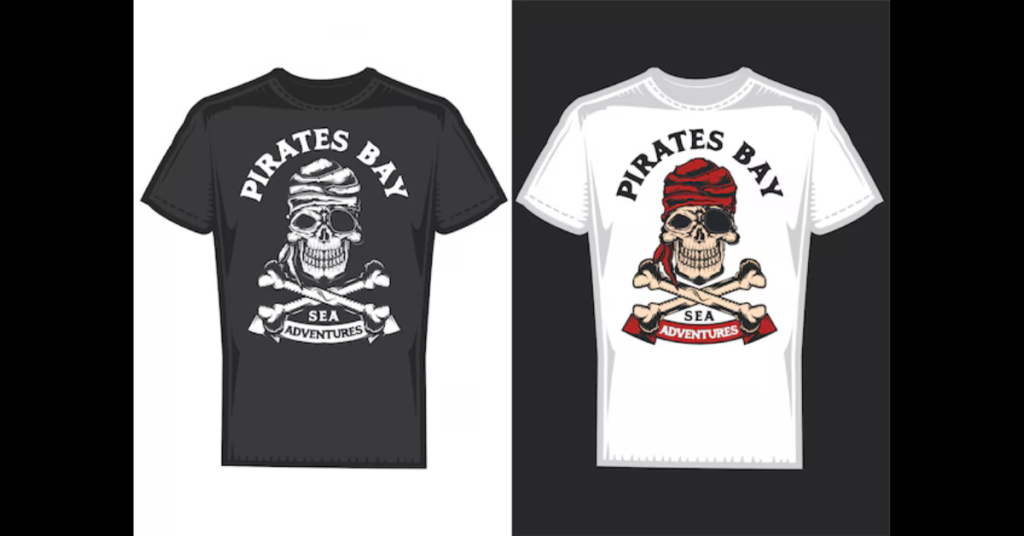Dennis Rodman, one of the most flamboyant and controversial figures in the history of professional basketball, is as well-known for his eccentric personality and bold fashion choices as he is for his prowess on the court. Throughout his career, Rodman has pushed boundaries, not only with his unconventional playing style but also with his distinctive fashion sense, which often included vibrant hair colors, body piercings, and unique clothing. Among the various elements of Rodman’s fashion legacy, the “Dennis Rodman shirt” has become a cultural icon, representing not just his individuality but also a broader shift in the intersection of sports, fashion, and self-expression.
This in-depth exploration of the “Dennis Rodman shirt” delves into the history and significance of Rodman’s fashion choices, the cultural impact of his style, the evolution of his shirts as a symbol of rebellion, and their influence on modern fashion. We will also examine the marketing and commercialization of Rodman-themed apparel, the role of nostalgia in the continued popularity of his shirts, and how his fashion sense resonates with contemporary audiences. Finally, we will discuss the legacy of Dennis Rodman as a fashion icon and how his shirts have transcended the world of sports to become a lasting symbol of individuality and non-conformity.
The Rise of Dennis Rodman: From Basketball Star to Cultural Icon
Rodman’s Early Life and Basketball Career
Dennis Rodman was born on May 13, 1961, in Trenton, New Jersey. His early life was marked by hardship, including growing up in a troubled household and struggling with self-esteem issues. Despite these challenges, Rodman discovered a passion for basketball during his late teens, which would eventually lead him to a successful career in the NBA.
Rodman played college basketball at Southeastern Oklahoma State University, where he caught the attention of NBA scouts with his impressive rebounding skills and defensive prowess. In 1986, he was drafted by the Detroit Pistons, where he quickly established himself as one of the league’s top defenders. His time with the Pistons, particularly during the “Bad Boys” era, was marked by his tenacious playing style and ability to dominate the boards, earning him the nickname “The Worm.”
Emergence of a Fashion Maverick
As Rodman’s career progressed, so did his reputation for being a maverick, both on and off the court. By the time he joined the Chicago Bulls in 1995, he had fully embraced his role as the NBA’s bad boy, not only with his aggressive playing style but also with his increasingly flamboyant fashion choices. Rodman began to experiment with his appearance, dyeing his hair in vibrant colors, getting numerous tattoos and piercings, and wearing unconventional clothing that often defied traditional gender norms.
It was during this period that the “Dennis Rodman shirt” began to take shape as a cultural phenomenon. Rodman’s shirts, often featuring bold graphics, provocative slogans, and unique designs, became a key part of his public persona. These shirts were more than just clothing; they were a statement of defiance against the expectations placed on professional athletes, particularly in the hyper-masculine world of the NBA.
The Cultural Impact of Rodman’s Fashion Choices
Breaking Gender Norms and Challenging Stereotypes
One of the most significant aspects of Dennis Rodman’s fashion legacy is his role in challenging traditional gender norms. In an era when professional athletes were expected to conform to a certain image of masculinity, Rodman boldly defied these expectations. His fashion choices, including his shirts, often incorporated elements traditionally associated with women’s fashion, such as sequins, lace, and floral patterns.
Rodman’s willingness to embrace a more fluid sense of gender identity was groundbreaking, particularly in the context of the 1990s, a time when discussions about gender and sexuality were far less mainstream than they are today. His shirts, with their bold designs and non-conformist slogans, became a symbol of his broader challenge to societal norms, inspiring others to embrace their own individuality.
The Intersection of Sports and Fashion
Dennis Rodman was one of the first athletes to truly blur the lines between sports and fashion. While athletes had long been influential figures in the world of fashion, often endorsing brands and setting trends, Rodman took this influence to a new level. He didn’t just wear fashionable clothes; he used fashion as a form of self-expression and a way to communicate his unique personality.
The “Dennis Rodman shirt” became a key element of this intersection between sports and fashion. Rodman’s shirts were not just about looking good; they were about making a statement. Whether he was wearing a shirt emblazoned with a provocative slogan or a design that reflected his mood or current interests, Rodman’s shirts were an extension of his personality and his attitude towards life.
Influence on Streetwear and Urban Fashion
Rodman’s influence on fashion extended beyond the NBA and into the broader world of streetwear and urban fashion. His bold, often outrageous shirts resonated with the youth culture of the 1990s, a time when streetwear was beginning to emerge as a major force in fashion. Rodman’s style, characterized by its irreverence and willingness to push boundaries, aligned perfectly with the ethos of streetwear.
The “Dennis Rodman shirt” became a symbol of rebellion and individuality, qualities that were central to the identity of streetwear culture. Young people, particularly those in urban areas, were drawn to Rodman’s shirts not just because they were fashionable, but because they represented a rejection of the status quo and an embrace of self-expression.
The Evolution of the Dennis Rodman Shirt
Early Designs and Their Significance
The earliest iterations of the “Dennis Rodman shirt” were often custom-made creations that reflected Rodman’s mood or current interests. These shirts typically featured bold graphics, such as images of skulls, flames, or animals, and were often paired with provocative slogans that challenged societal norms or poked fun at the expectations placed on professional athletes.
One of the most iconic early designs was a shirt that simply read “I’m the Bad Boy of Basketball.” This shirt encapsulated Rodman’s public persona during his time with the Detroit Pistons and later the Chicago Bulls. It was a declaration of his defiance, his willingness to embrace his role as the NBA’s rebel, and his rejection of the traditional image of a professional athlete.
Collaboration with Designers and Brands
As Rodman’s fame grew, so did his influence in the fashion world. He began collaborating with designers and brands to create custom shirts that reflected his unique style. These collaborations often resulted in limited-edition pieces that became highly sought after by fans and collectors.
One notable collaboration was with designer Jean-Paul Gaultier, known for his avant-garde approach to fashion. Together, Rodman and Gaultier created a series of shirts that combined elements of punk rock, streetwear, and high fashion. These shirts featured bold, asymmetrical designs, unconventional materials, and intricate detailing, making them true works of art.
Rodman also worked with brands like Nike and Adidas to create sportswear that blurred the lines between athletic apparel and fashion. These collaborations often included shirts that incorporated Rodman’s signature style, such as bold colors, graphic prints, and unique textures. The success of these collaborations helped solidify Rodman’s status as a fashion icon and further elevated the status of the “Dennis Rodman shirt.”
Commercialization and the Rise of Rodman-Themed Apparel
As Rodman’s popularity continued to soar, the demand for his shirts and other merchandise grew. Recognizing the commercial potential, Rodman began to capitalize on his image by launching his own line of apparel. The “Dennis Rodman” brand featured a wide range of clothing, including shirts, hats, and jackets, all designed to reflect his bold and rebellious style.
These shirts became popular not only among basketball fans but also among those who admired Rodman’s fearless approach to fashion and life. The commercialization of Rodman’s image allowed fans to connect with their idol in a new way, by wearing clothing that embodied his unique personality.
The success of Rodman’s apparel line also paved the way for other athletes to launch their own fashion brands, contributing to the growing trend of sports stars becoming fashion entrepreneurs. Today, it is common for athletes to have their own clothing lines, but Rodman was one of the pioneers in this space, demonstrating the potential for sports and fashion to intersect in a meaningful and profitable way.
The Role of Nostalgia in the Popularity of Dennis Rodman Shirts
The 1990s Comeback
In recent years, there has been a resurgence of interest in 1990s fashion, driven in part by a wave of nostalgia for the era. This revival has brought many iconic elements of 90s culture back into the spotlight, including the fashion choices of celebrities like Dennis Rodman. As a result, the “Dennis Rodman shirt” has experienced a renewed popularity, particularly among younger generations who may not have been around to witness Rodman’s heyday but are drawn to the retro aesthetic and the rebellious spirit it represents.
Vintage and retro clothing shops have reported increased demand for Rodman-themed apparel, and new designs inspired by his iconic shirts have also entered the market. This nostalgia-fueled comeback has helped to cement Rodman’s status as a fashion icon, with his shirts serving as a tangible connection to a time when sports, fashion, and pop culture intersected in new and exciting ways.
Rodman’s Enduring Influence on Fashion
Dennis Rodman’s influence on fashion has endured long after his retirement from professional basketball. His willingness to challenge conventions and push boundaries has inspired countless designers, artists, and fashion enthusiasts. The “Dennis Rodman shirt” continues to be a symbol of individuality and non-conformity, resonating with those who admire his fearless approach to both life and fashion.
Rodman’s impact can be seen in the work of contemporary designers who draw inspiration from his bold and unconventional style. From the use of bright colors and graphic prints to the incorporation of gender-fluid elements, many of today’s fashion trends can be traced back to the trail Rodman blazed in the 1990s. His legacy as a fashion icon lives on, not only in the continued popularity of his shirts but also in the broader influence he has had on the fashion industry as a whole.
Conclusion
The “Dennis Rodman shirt” is more than just a piece of clothing; it is a symbol of a cultural revolution that challenged traditional norms and redefined the intersection of sports and fashion. Through his bold and often controversial fashion choices, Rodman broke down barriers and paved the way for future generations of athletes and fashion icons to express themselves in new and innovative ways.
Rodman’s shirts, with their provocative designs and rebellious spirit, continue to inspire and resonate with people around the world. They serve as a reminder of a time when individuality was celebrated, and the lines between sports, fashion, and pop culture were blurred in exciting and unpredictable ways.
As we look back on Dennis Rodman’s legacy, it is clear that his influence extends far beyond the basketball court. His shirts, once a symbol of defiance and non-conformity, have become cultural artifacts that embody the spirit of an era and the enduring power of self-expression. Whether through vintage collections, modern reinterpretations, or new collaborations, the “Dennis Rodman shirt” remains a timeless icon in the world of fashion and a testament to the enduring impact of one of basketball’s most unforgettable figures.







